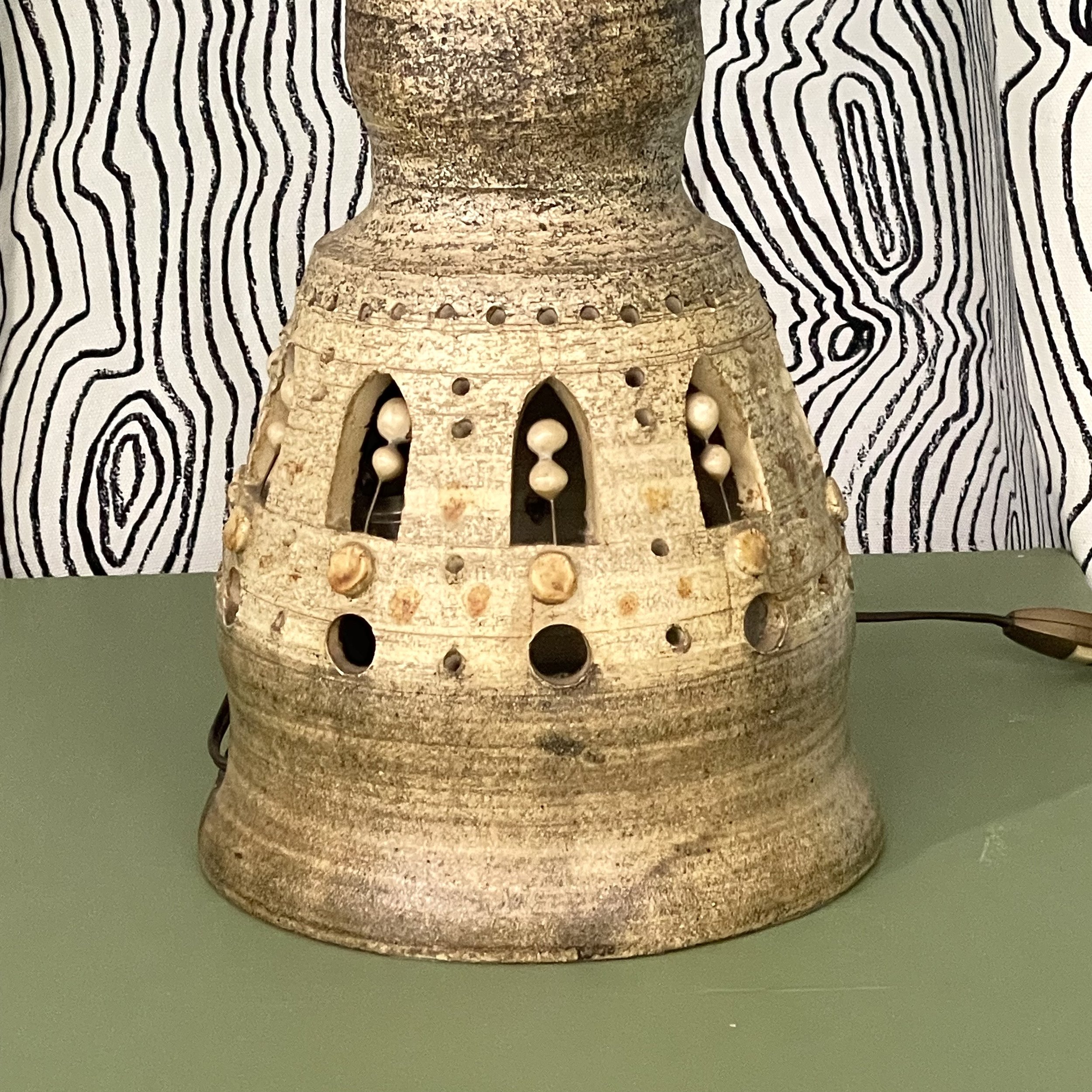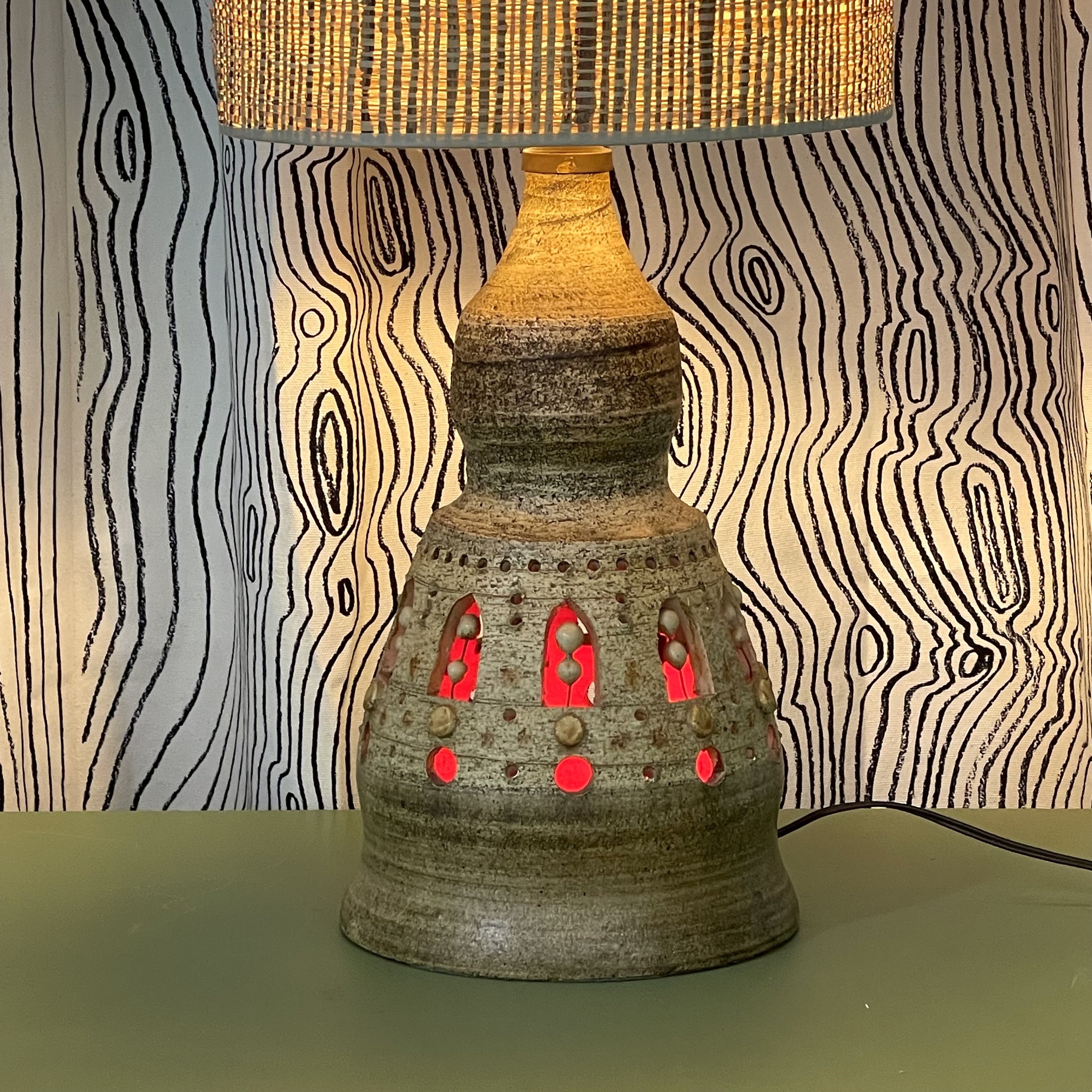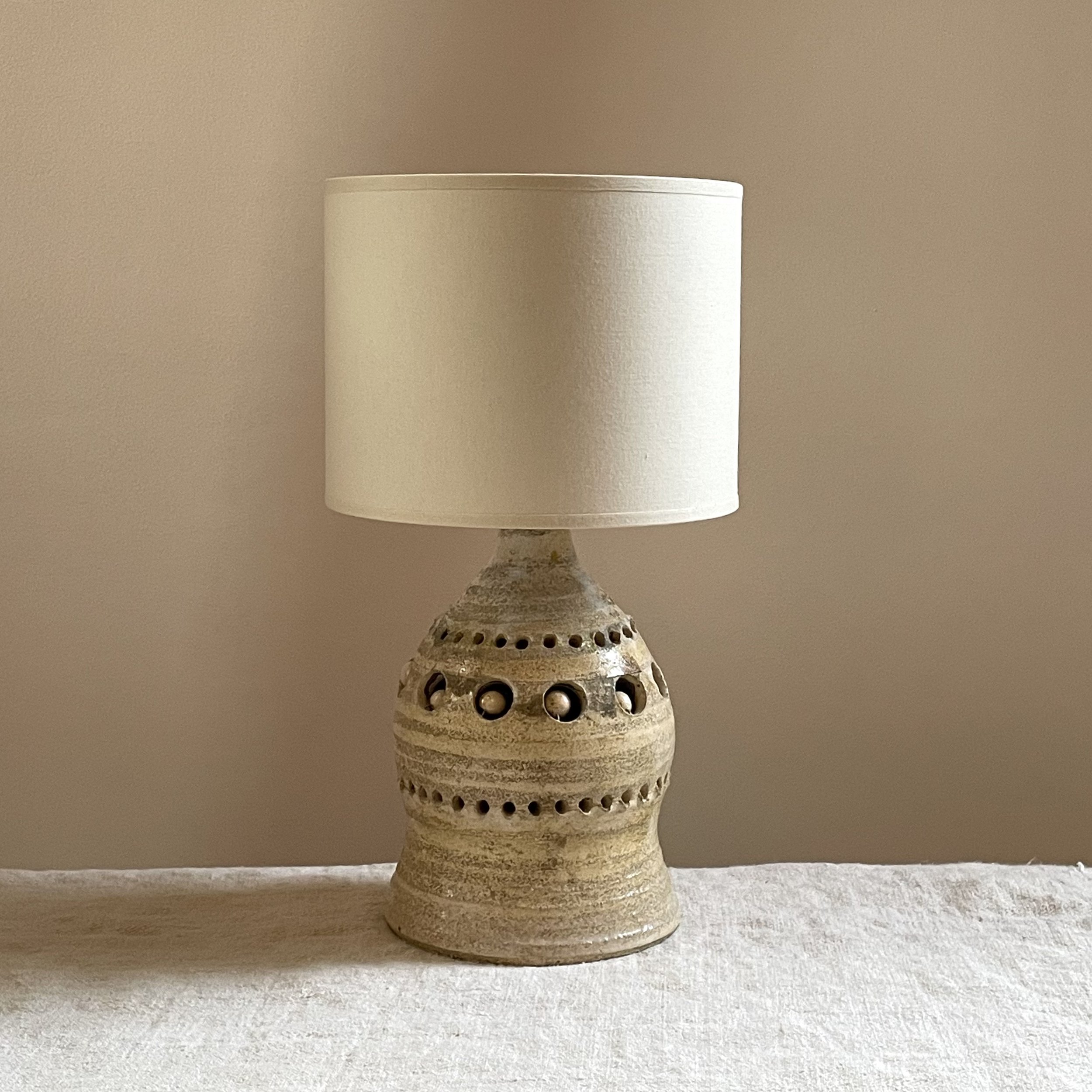Trois grandes appliques brutalistes






Trois grandes appliques brutalistes
Trois grandes appliques en alliage de cuivre martelé patiné, laquées blanc au revers
Art populaire, France
Circa 1950
H 52 x L 77 cm
État d’usage
Three large sconces in patinated hammered copper alloy, white lacquered on the reverse side
Folk art, France
Circa 1950
H 52 x W 77 cm
Condition of use
Cette série de trois appliques interroge par son style. Il s’agit d’un travail d’artisan ferronnier chevronné, ces pièces présentent des traces de martèlement et une finition laqué blanche en partie intérieure pour que la lumière qui s’y reflète se diffuse mieux.
La réalisation correspond à une approche brutaliste. Le métal est traité comme une feuille à découpes laissées brutes sans être vernies mais seulement oxydées. Cela correspond stylistiquement à ce que l’on peut trouver notamment dans des bâtiments écclésiastiques d’architecture brutaliste dont les caractères principaux sont l’usage de béton associé à du verre dont le jeu de couleur et de matière brute remplace les vitraux traditionnels.
Il est difficile de sonder la volonté de motif créé ici mais il présente une similitude évidente avec celui bien connu, dans le monde entier, désignant le danger biologique. Avant la création du symbole international du danger biologique “Biohazard” au début du XXème siècle, il n'y avait aucun symbole universel pour exprimer un danger de nature biologique.
En 1966, une équipe d'ingénieurs et de designers du groupe Dow Chemical cherchent à créer le meilleur pictogramme pour exprimer ce risque.
Charles Baldwin, un ingénieur responsable de l'équipe, déclara à propos du symbole souhaité : « We wanted something that was memorable but meaningless, so we could educate people as to what it means. »
This series of three sconces questions by its style. The work of an experienced ironworker, these pieces show traces of hammering and a white lacquered finish on the inside so that the light that reflects on them is better diffused.the realization corresponds to a brutalist approach. The metal is treated like a sheet of cuttings left rough without being varnished but only oxidized.
This corresponds stylistically to what can be found in ecclesiastical buildings of brutalist architecture whose main characteristics are the use of concrete combined with glass whose play of color and raw material replaces the traditional stained glass.
It is difficult to probe the will of the pattern created here but it presents an obvious similarity with the well-known, worldwide, designating biological danger. Before the creation of the international biohazard symbol "Biohazard" at the beginning of the 20th century, there was no universal symbol to express a danger of biological nature. In 1966, a team of engineers and designers from the Dow Chemical group sought to create the best pictogram to express this risk. Charles Baldwin, an engineer in charge of the team, said of the desired symbol: "We wanted something that was memorable but meaningless, so we could educate people as to what it means. »











